Trump II: Tensions, trade and tweets
Saima Jannath, Vendor Engagement Associate (London)
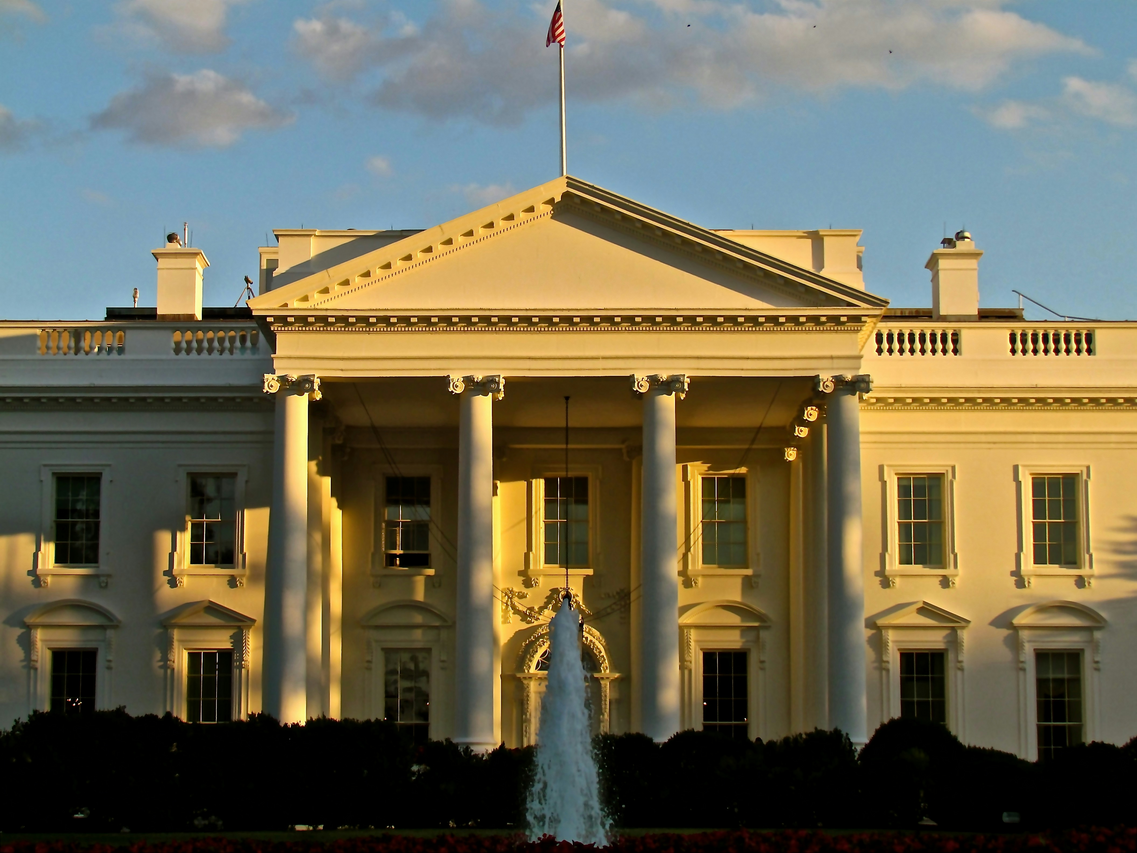
As we enter into Trump’s second term in office, markets and investors are unsure of what to expect. Throughout his campaign, Trump announced his “America first” approach, suggesting drastic policy changes including new tariffs, deregulation and global conflict.
This report provides an outline of the types of alternative datasets that can help investors navigate the new Trump era and Maganomics. We summarise the alternative sources used to track the following Trump-related topics:
- Geopolitical tension
- Government procurement/spend
- Global trade flows and tariffs
- Tweeting narratives
- Policy forecasting
Trump and geopolitical tension
Trump claims that his return to the White House will drastically reshape US foreign policy. With the ongoing conflict in Ukraine and the Middle East, Trump’s expected non-interventionist approach may add more fuel to the fire in geopolitically tense regions. While markets face uncertainty in these regions, investors can look to alternative data for some of the picture.
Procurement data
Government spending datasets capture transactions between governments and corporations (both public and private) supplying goods or services to a country (i.e. weaponry). For instance, the European Defence Agency increased its spending on defence by 10% in 2023 (likely as a response to the Russia-Ukraine conflict).
Alternative data can offer more timely insights into public spending than is achievable with publicly announced figures. Procurement datasets can help track the specific areas/sectors that governments are cutting/increasing spending in.
Trump and global trade
In August 2024, Trump announced his plans to implement a series of tariffs, which have been described as “aggressive”. With his “America first” approach, Trump proposed taxing key imports, including raw materials, semiconductors and vehicles. In November, he announced a blanket tariff (10% for all imported goods, 25% on goods from Canada and Mexico). Below, we’ve included a comparison of tariffs enacted under Trump in his first term, those active under Biden, and those proposed by Trump during his campaign.
Comparison of US tariffs (2016-2025)
Trump’s proposed tariff actions are seemingly more aggressive than those seen in his previous term as president.
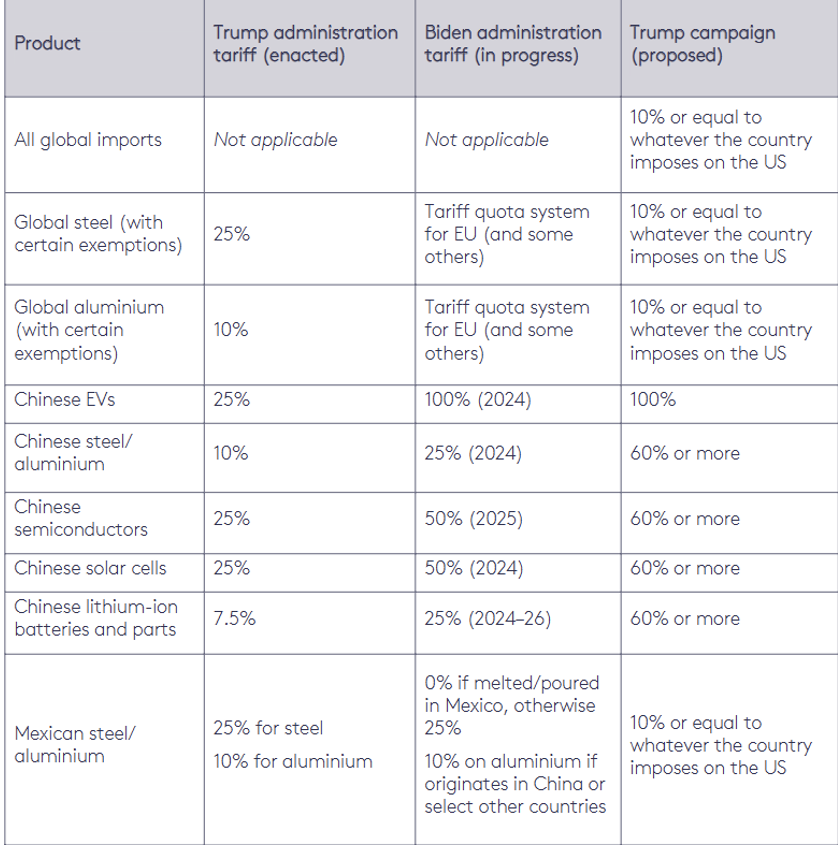
Source: London School of Economics
While Trump’s tariff plan is only an idea thus far, countries, companies and consumers are preparing for the implications should these tariffs come to fruition. If tariffs are imposed, potential impacts include:
- Increased foreign and domestic prices on consumer goods
- Disrupted supply chains
- A slow-down in economic growth
Impact of Trump’s proposed tariffs on US, China and EU GDP
China is expected to experience the largest impact from these tariffs, with a nearly 0.7% drop in GDP
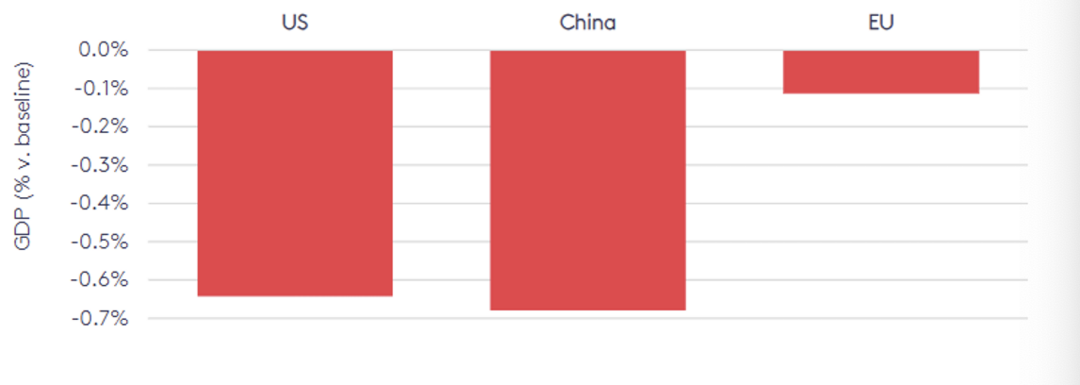
Source: London School of Economics
Global trade data
According to the IMF’s Direction of Trade Statistics database, the US is the largest consumer of Chinese manufactured goods (figures from 2023).
China export volumes to partnering countries (million, USD)
The US businesses remain the leading consumer of goods produced in China
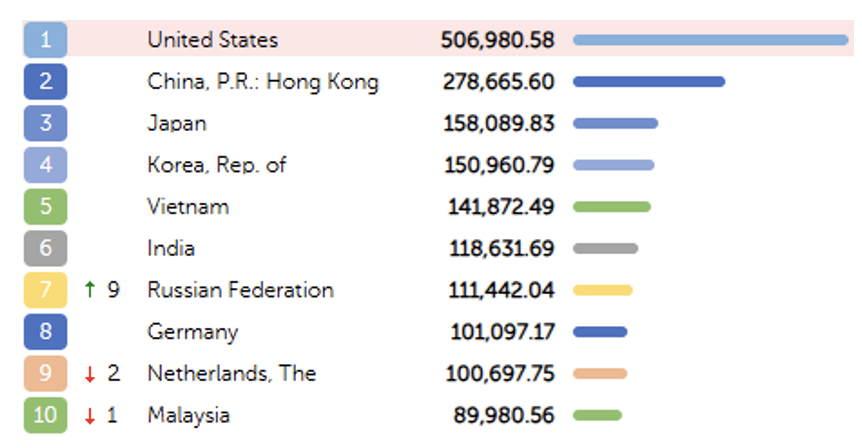
Source: IMF Direction of Trade Statistics
Global trade data can show changing trade relationships and highlight the negative impact on businesses resulting from policy changes.
Increased prices
According to the Tax Foundation, as a direct result of ongoing trade wars imposed by both the Trump and Biden administrations, US households have paid between $200 to $400 per year in additional tax and duties.
Trade war tariff collections (per household)
The total duties collected under Trade War Tariffs across the number of US households between 2018 and 2022 highlight the rising prices of goods for consumers
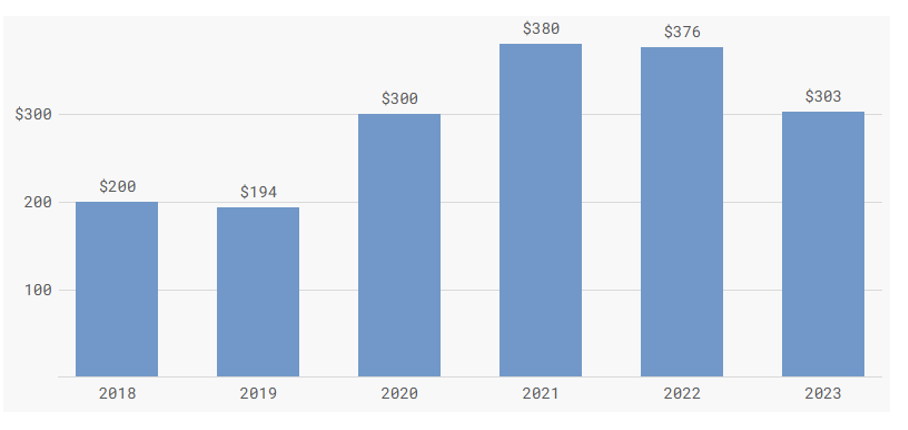
Source: Tax Foundation
As of March 2024, the US government has collected an additional $233bn in taxes from US consumers. While revenue is being generated, it is clear that US consumers are paying the price.
Trump and his tweets
Donald Trump famously relies on social media platforms (i.e. Twitter and Truth) to disseminate his views on foreign and domestic policy. A study published in the Springer Nature Journal of Economics and Finance reviewed the impact of tweets published by Trump between 2015 and 2019 on financial markets. It concluded that Trump’s tweets relating to foreign policy, trade, and immigration generated increased uncertainty. Similarly, a study conducted by the Norwegian University of Science and Technology in 2019 attempted to quantify the opportunity created in financial markets as a result of Trump’s tweets.
The effect of Trump’s tweets on financial markets
Applying a hedge whenever Trump mentions “trade wars” on Twitter results in higher returns
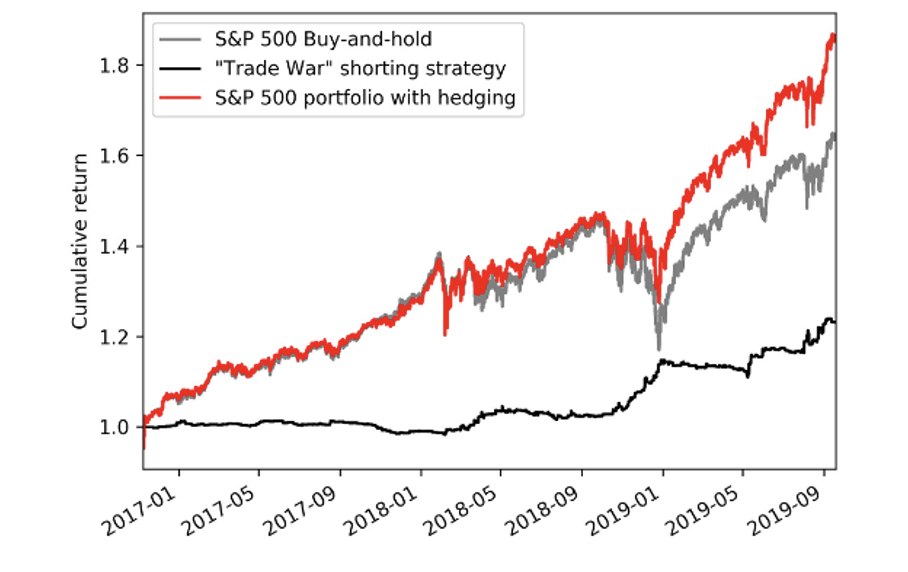
Source: Norwegian University of Science and Technology
The study suggested that investors implementing a short position within 75 minutes of Trump mentioning “trade wars” on Twitter resulted in higher returns than a buy-and-hold strategy with the S&P 500.
Forecasting policy
Given the high levels of uncertainty created by Trump’s tweets, markets are unclear as to what to expect when Trump takes office. Alternative datasets can help investors make sense of his wording.
Ultimately, markets and investors are otherwise uncertain about what to expect on key global issues. For investors looking to predict and track this uncertainty, they may look to various alternative data types including:
- Procurement databases to track changing government spending (e.g. increased military expenditure)
- Global trade data to track how products and supply chains are affected by tariffs
- Inflation data to nowcast the downstream implications of import tariffs
- Social media data to track sentiment towards companies affected by Trump’s comments
- Policy data to predict which bills might be enacted under President Trump